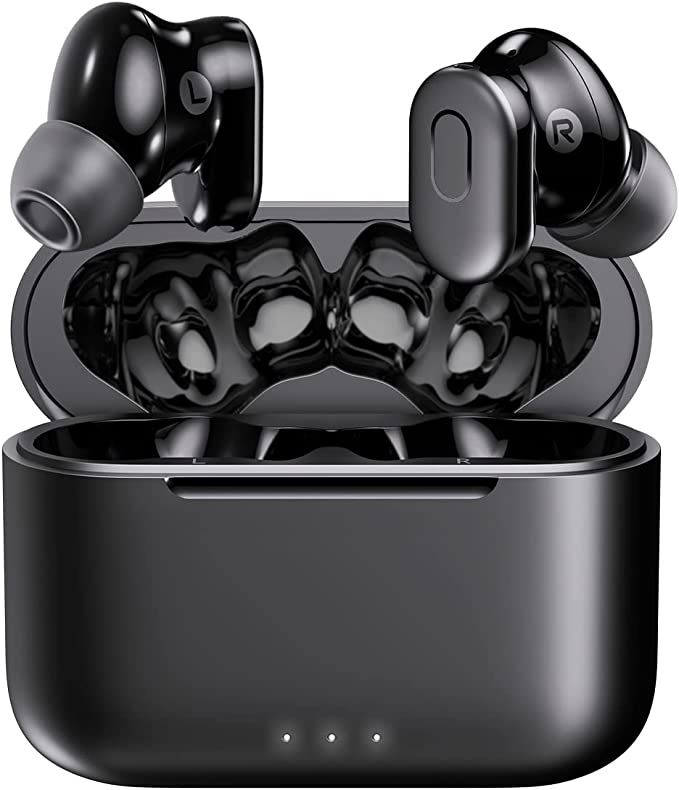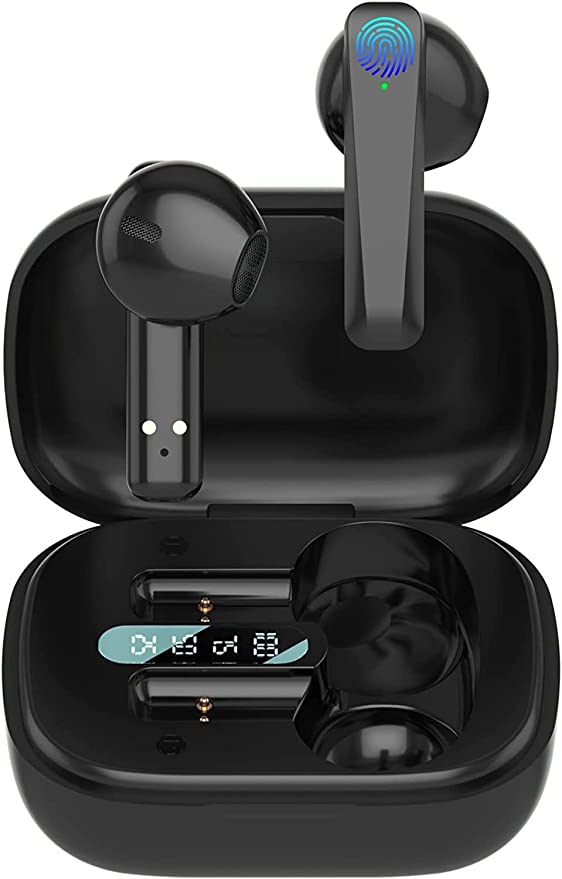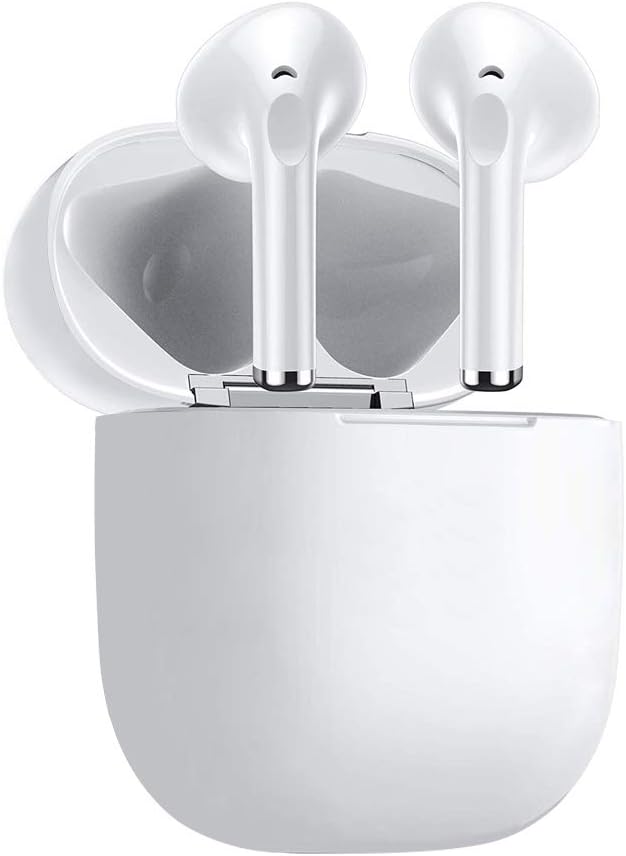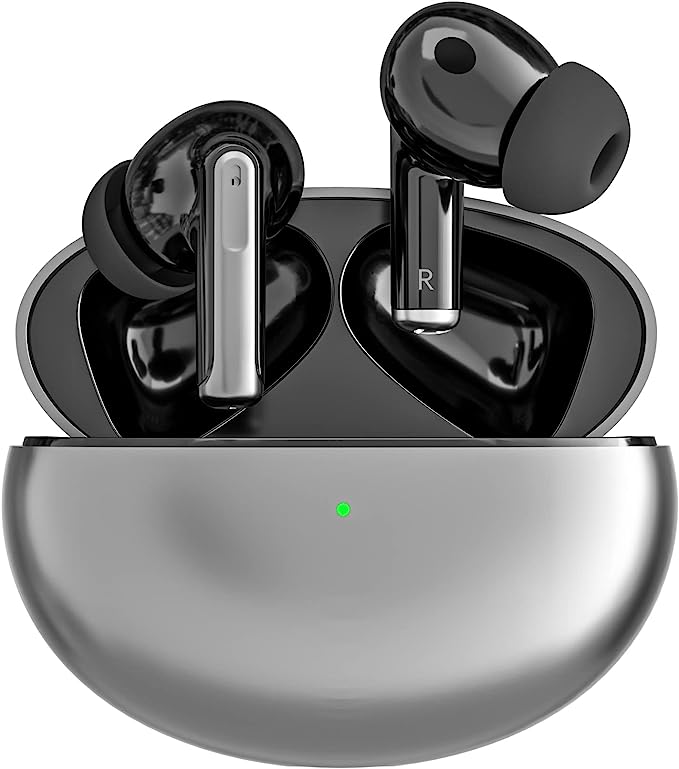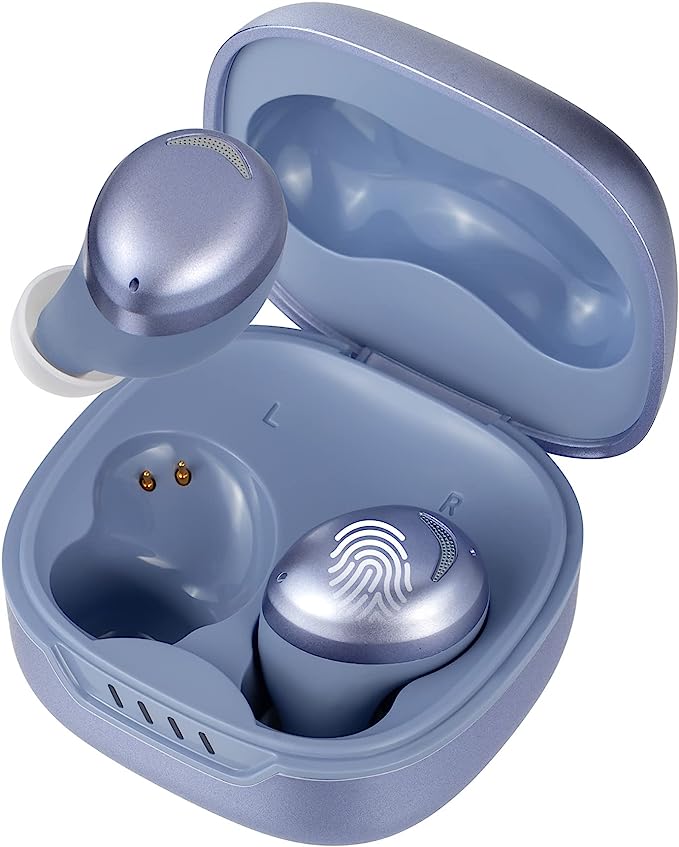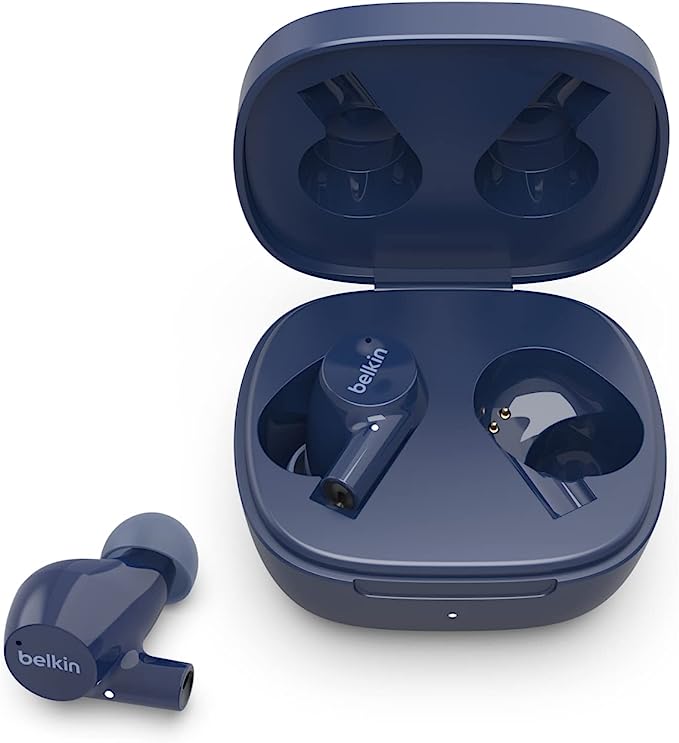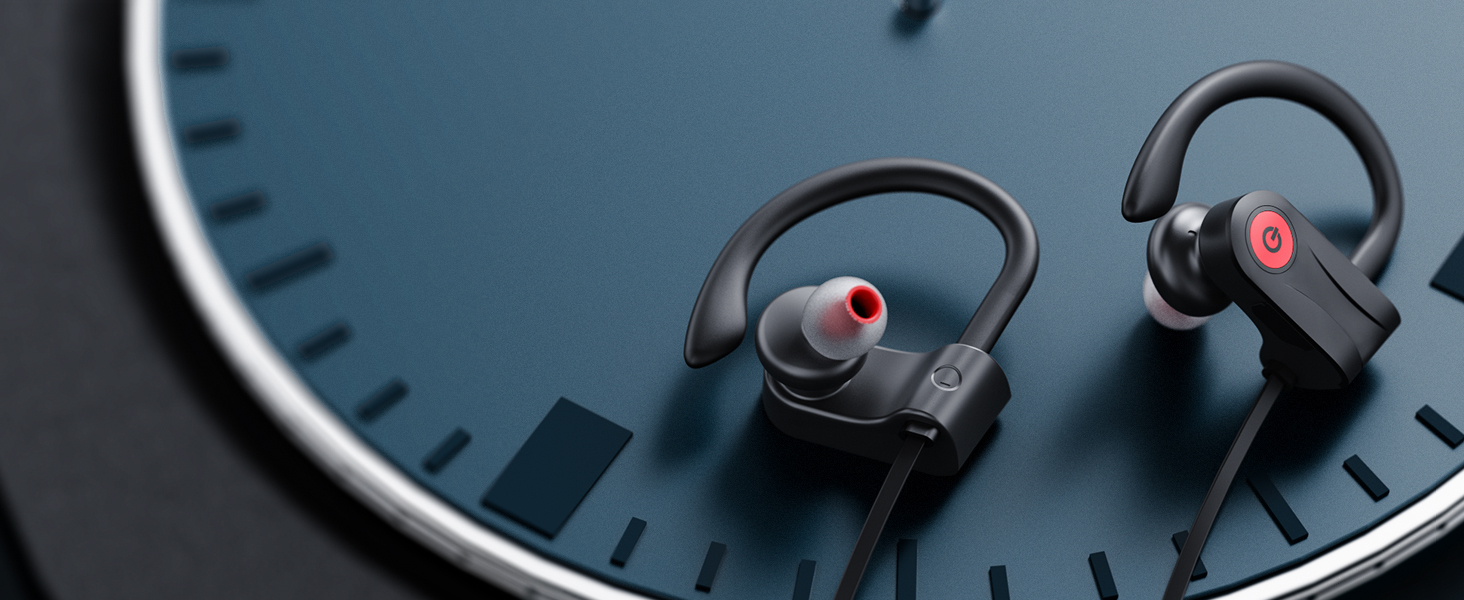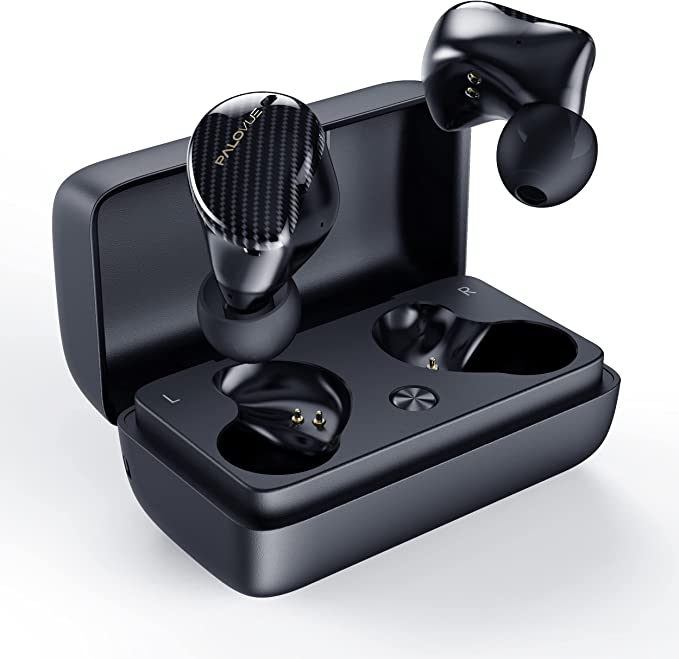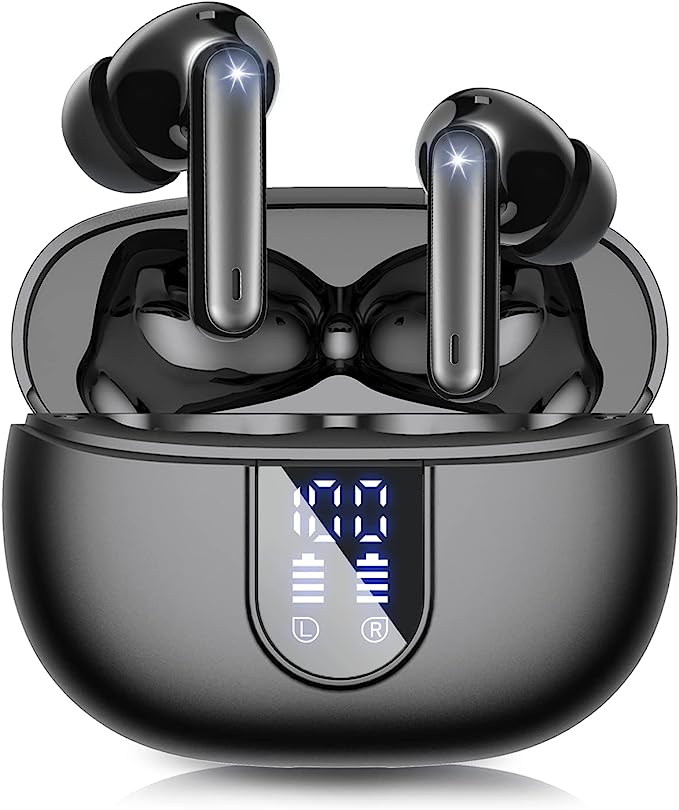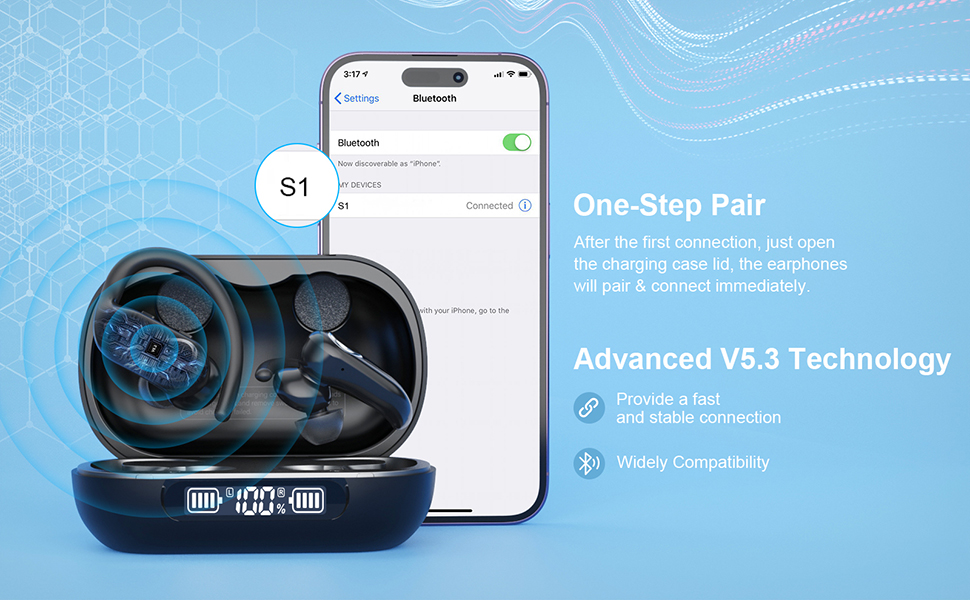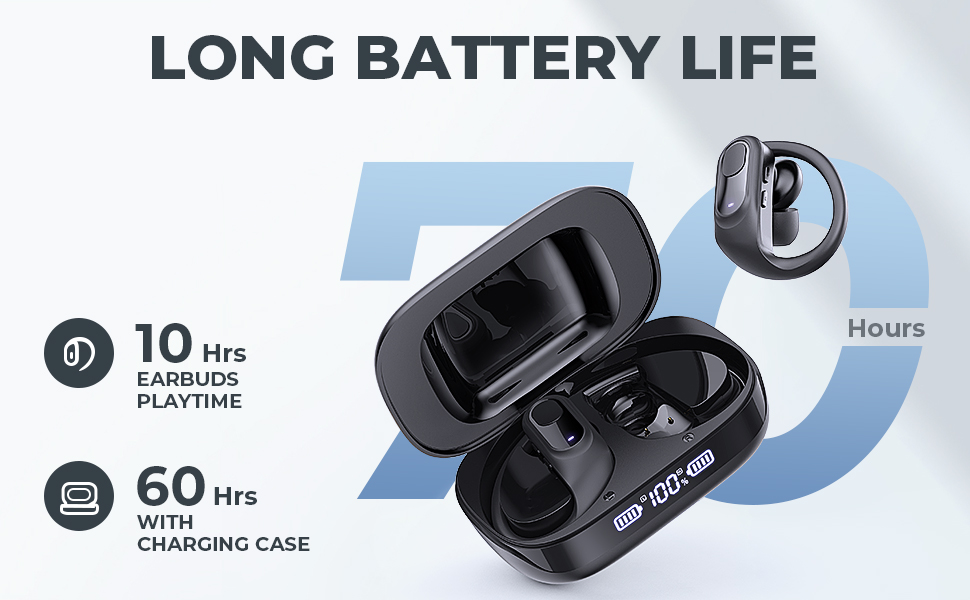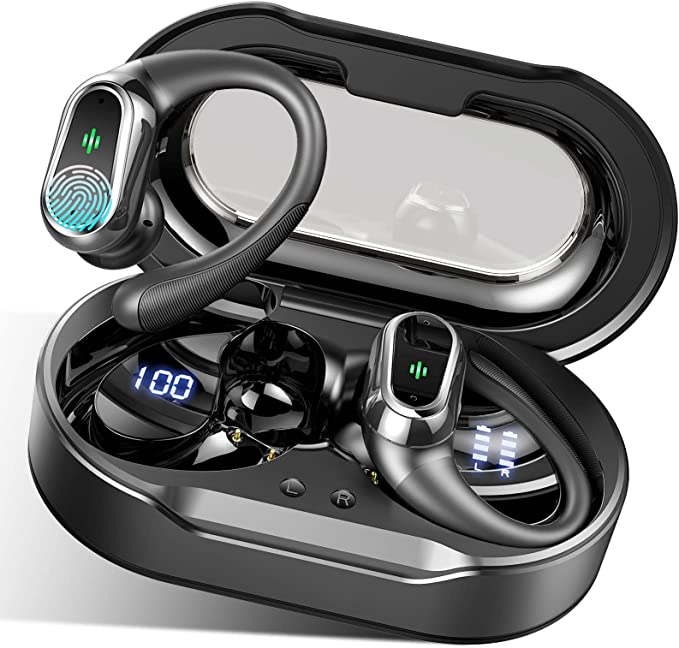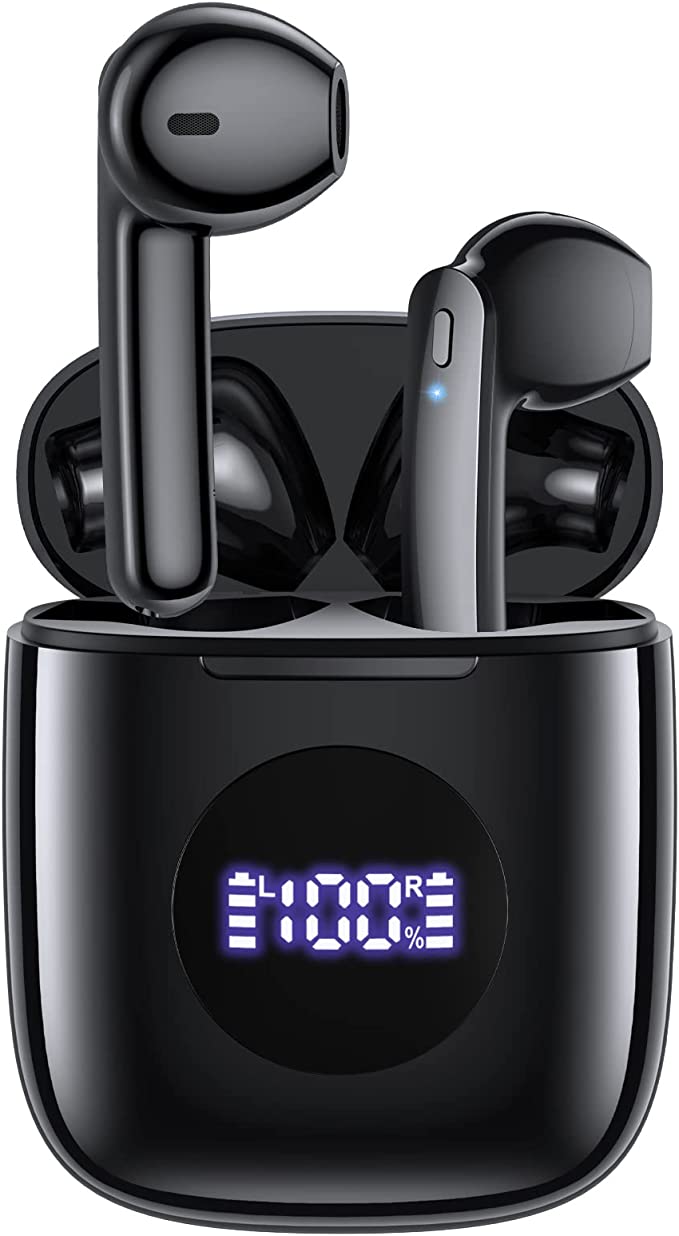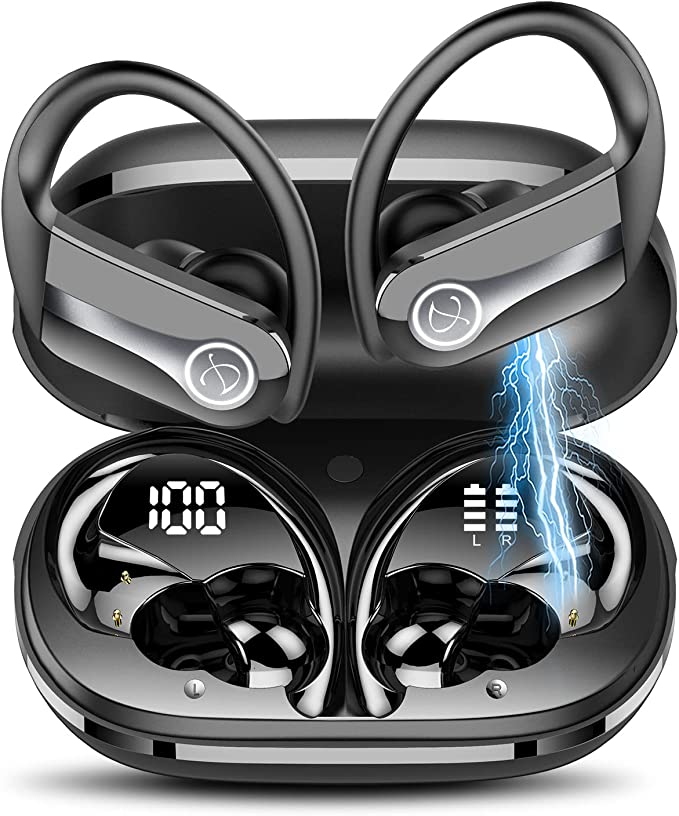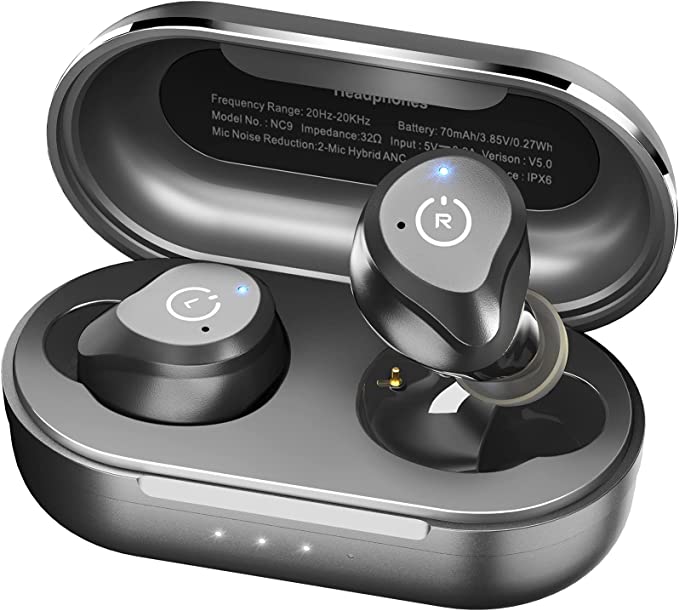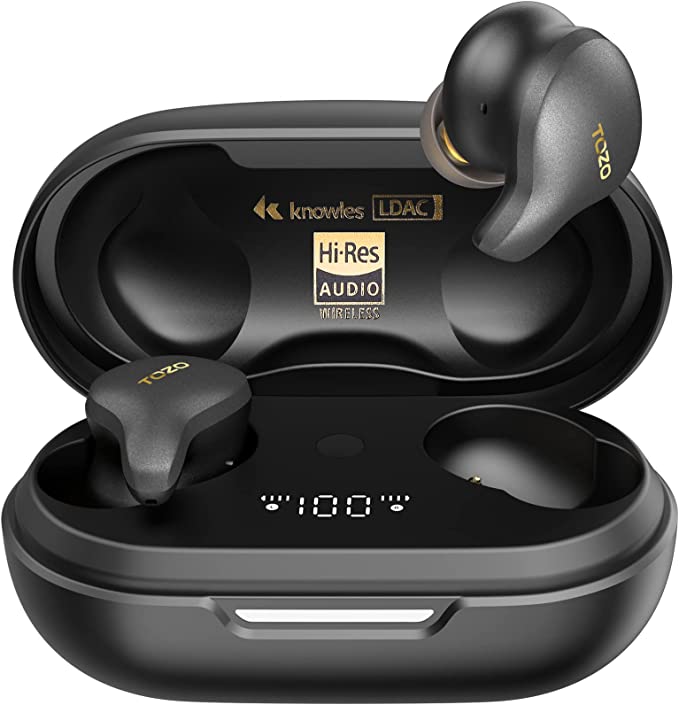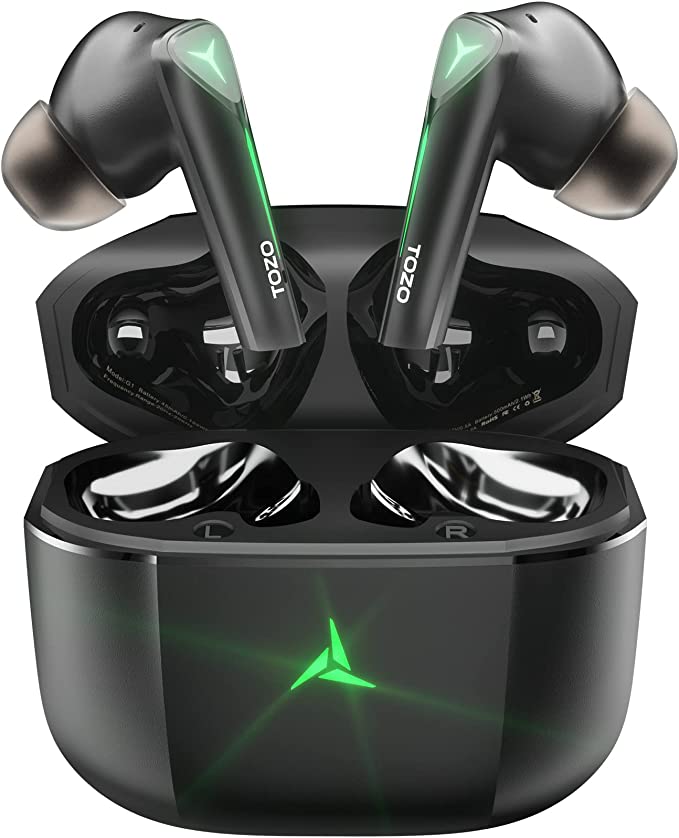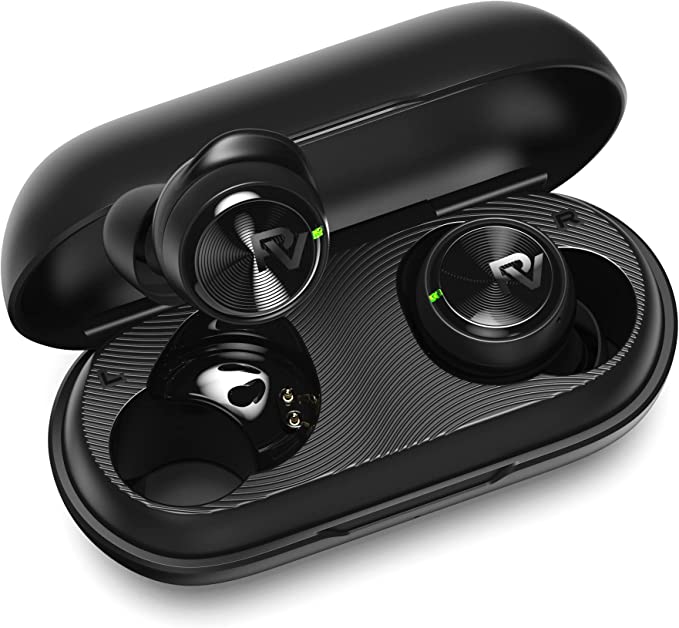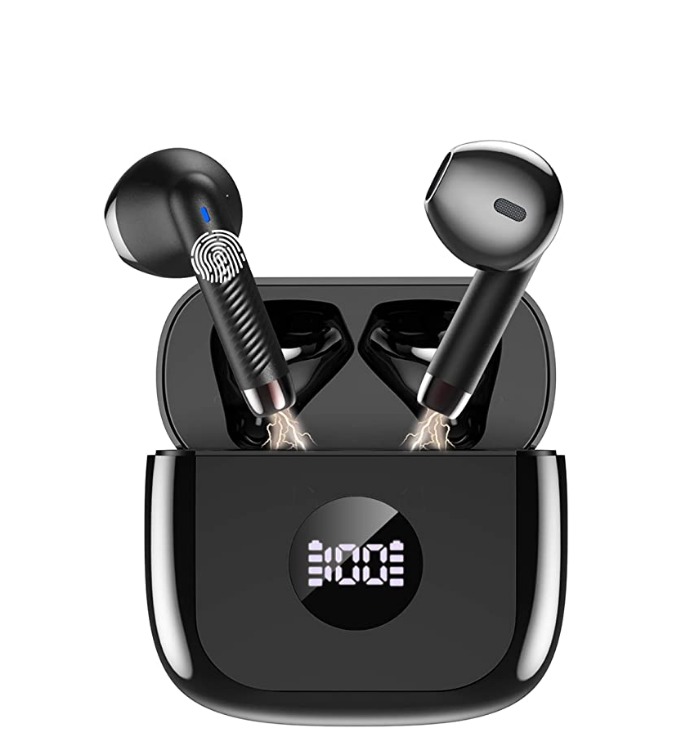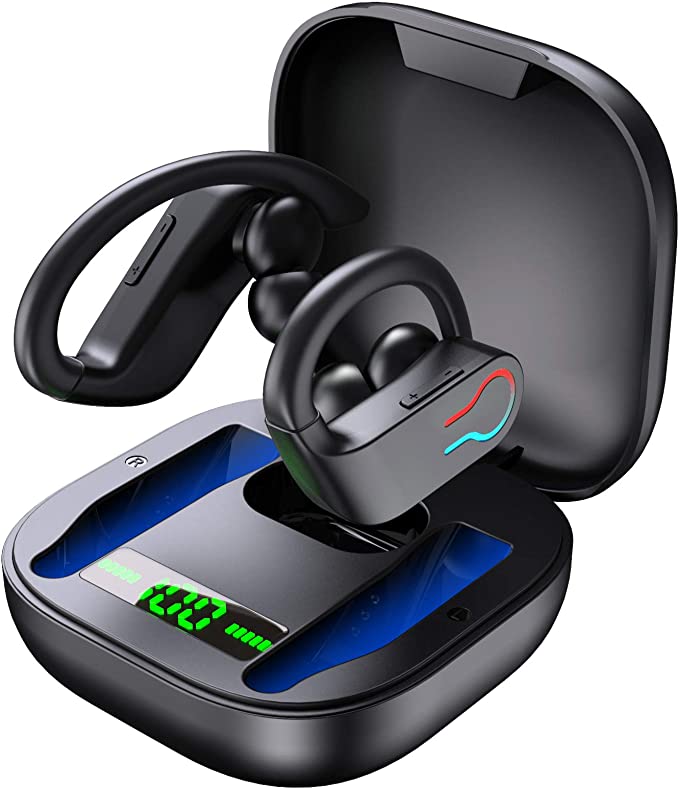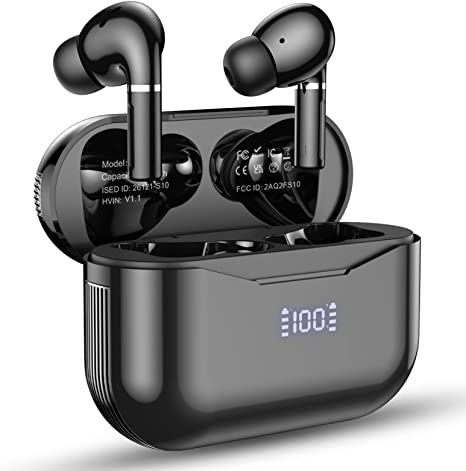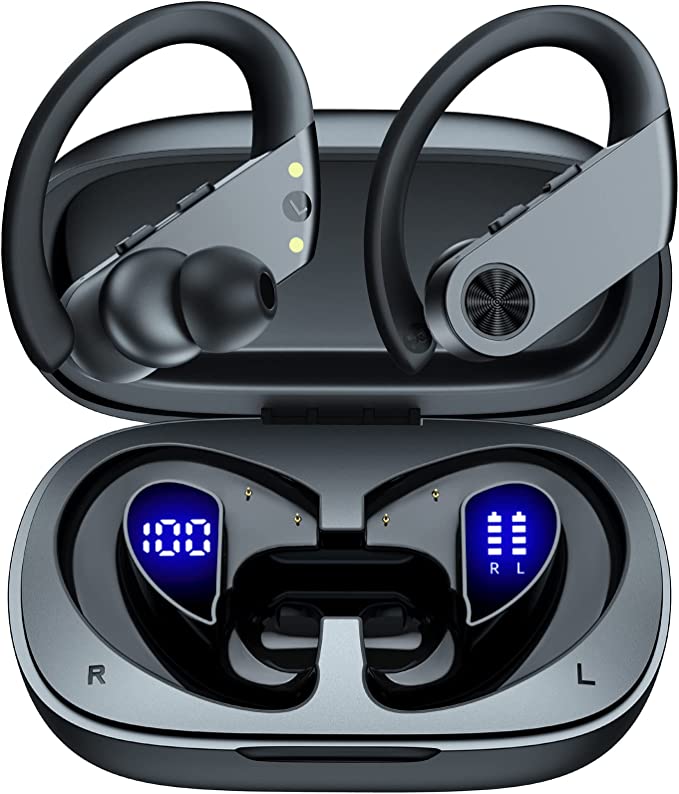PSIER T12 Wireless Earbuds: Long-Lasting Audio Freedom with Bluetooth 5.3
Update on Feb. 14, 2025, 1:52 p.m.
The crackle of a poorly connected radio, the tangle of headphone wires – these were once the unavoidable annoyances of personal audio. But just as the world moved from horse-drawn carriages to automobiles, our listening experiences have undergone a dramatic transformation. The rise of wireless earbuds, tiny technological marvels, represents a significant leap forward, offering freedom and convenience that was unimaginable just a few decades ago. What started as a niche luxury has become a mainstream necessity, and the PSIER T12 Wireless Earbuds are a prime example of how far this technology has come, offering a compelling blend of features at an accessible price. Let’s dive into the science and engineering that make these earbuds tick.

Bluetooth 5.3: The Unsung Hero of Wireless Stability
Imagine a highway. Old Bluetooth versions were like two-lane roads – functional, but prone to traffic jams (dropped connections) and slowdowns (audio lag). Bluetooth 5.0 widened that highway, but 5.3 adds dedicated express lanes and intelligent traffic management. The PSIER T12 leverages this latest Bluetooth 5.3 technology, providing a noticeably more stable and efficient connection than older versions.

But how does it achieve this? One key improvement lies in enhanced connection stability mechanisms. Bluetooth 5.3 devices are better at negotiating and maintaining connections, even in environments crowded with other wireless signals – think busy coffee shops, gyms, or public transportation. This means fewer of those frustrating audio dropouts that can interrupt your music or calls. The underlying technology achieves this by using more sophisticated algorithms to filter out interference and maintain a strong link between the earbuds and your device.
Another significant advancement is reduced latency. Latency refers to the delay between when an audio signal is sent and when you hear it. While often imperceptible, high latency can be noticeable when watching videos or playing games, causing the audio to be out of sync with the visuals. Bluetooth 5.3 significantly reduces this latency, making for a more seamless and immersive experience.
The PSIER T12’s use of Bluetooth 5.3 also contributes to its impressive battery life, which we’ll explore next. While I couldn’t definitively confirm whether the T12 supports the new LE Audio standard (a feature of Bluetooth 5.3 that further reduces power consumption and can improve audio quality), the core improvements of 5.3 itself already offer substantial efficiency gains.

Power Play: Demystifying Earbud Battery Life
We’ve all been there – you’re halfway through your favorite podcast on your commute, and your earbuds die. Battery life is a crucial factor for wireless earbuds, and the PSIER T12 tackles this head-on with a claimed 60 hours of total playtime with the charging case. But what does that actually mean, and how does it work?
Let’s think of a lithium-ion battery, the type used in most earbuds, like a rechargeable water bottle. The bottle’s capacity is measured in milliliters (ml), while a battery’s capacity is measured in milliampere-hours (mAh). The higher the mAh, the more “juice” the battery can hold. The earbuds themselves have a smaller battery (like a small water bottle) that provides around 8 hours of listening on a single charge.

The charging case, on the other hand, is like a portable water fountain. It contains a much larger battery that can recharge the earbuds multiple times. The PSIER T12’s case provides an additional 52 hours of listening time, bringing the total to 60. This means you can go days, even weeks, without needing to plug the case itself into a power outlet, depending on your usage.
The T12 earbuds’ digital display makes it very easy to see the current battery life of the case. The display utilizes a simple micro controller, and a small LED display. The micro controller measures the current battery voltage, then estimates and displays the current battery charge percentage, using an algorithm. This is similar to how your cell phone displays the battery charge.
To maximize your battery life, it’s best to avoid extreme temperatures and to store the earbuds in their charging case when not in use.
The Sound of Science: How In-Ear Design Shapes Your Audio
You might be surprised to learn how much the shape of your earbuds affects the sound you hear. The PSIER T12 uses an in-ear design, meaning the ear tips fit snugly inside your ear canal. This isn’t just about comfort; it’s crucial for sound quality.
Think of sound as waves traveling through the air. When these waves reach your ear, they need to travel down your ear canal to reach your eardrum. An in-ear design creates a seal, effectively blocking out a significant amount of external noise. This is called sound isolation, and it has several benefits.
First, it allows you to hear your music more clearly, even at lower volumes. Because less external noise is competing with your audio, you don’t need to crank up the volume to hear all the details. This is better for your hearing in the long run. Second, sound isolation improves bass response. Bass frequencies are longer sound waves, and they tend to leak out more easily with open-back or poorly fitting earbuds. The seal created by an in-ear design helps to contain these bass frequencies, resulting in a richer, more impactful low-end.
While I don’t have the exact specifications for the PSIER T12’s drivers, they are most likely dynamic drivers, the most common type in consumer earbuds. Dynamic drivers work like miniature loudspeakers, using an electromagnet to move a diaphragm, which in turn creates sound waves. They are generally known for producing good bass and being relatively affordable. It’s important to note that while “premium sound” is mentioned in the product description, this is a subjective term. The T12 likely offers a very good listening experience for its price point, but it’s not going to compete with high-end audiophile headphones.
Comfort Counts: Finding the Right Fit
Even the best-sounding earbuds are useless if they’re uncomfortable. The PSIER T12 is described as lightweight, and its in-ear design is intended to provide a secure and comfortable fit for most users. The soft ear tips cushion the earbuds within the ear, minimizing pressure and fatigue.
However, it’s important to acknowledge that everyone’s ears are different. What fits one person perfectly might be uncomfortable for another. The T12 likely comes with different sizes of ear tips, allowing you to find the best fit for your ears. A good seal is crucial not only for comfort but also for optimal sound isolation and bass response.
Reset Demystified
If your earbuds are not acting the way you think they should, you can always reset them. Here are step by step instructions on how to do so.
- Make sure that you remove, or “forget” the T12 under the bluetooth options on your device.
- Take both earbuds out of the charging case, and manually turn them off.
- Press and hold the multi-function button(MFB) on both earbuds for 15 seconds. You should see orange and white lights flash for 1 second before the earbuds turn off.
- After a couple of seconds, turn on both earbuds. Then double press the MFB on both earbuds, this will make the earbuds pair to each other. You will know they have paired when the orange and white lights flash.
- You can now pair the earbuds with your device.
Beyond the Basics: A Glimpse into the Future of Wireless Audio
The PSIER T12 represents a snapshot of current wireless earbud technology – affordable, convenient, and increasingly feature-rich. But what does the future hold? We can expect to see even longer battery life, thanks to more efficient Bluetooth chips and battery technology. Active Noise Cancellation (ANC), which uses microphones and clever processing to actively block out external noise, is becoming more common even in mid-range earbuds. Higher-quality audio codecs, like aptX Adaptive and LDAC, which can transmit more audio data wirelessly, will likely become more widespread. And we may even see more integration with AI assistants, allowing for more seamless control and personalized audio experiences.
Conclusion: Affordable Access to Advanced Tech
The PSIER T12 isn’t about groundbreaking innovation; it’s about making existing, valuable technology accessible to a wider audience. It demonstrates that you don’t need to spend a fortune to enjoy the freedom and convenience of wireless audio, with a stable Bluetooth 5.3 connection, long battery life, and a comfortable, sound-isolating design. It’s a testament to how far wireless audio has come and a glimpse of the exciting possibilities that lie ahead.
